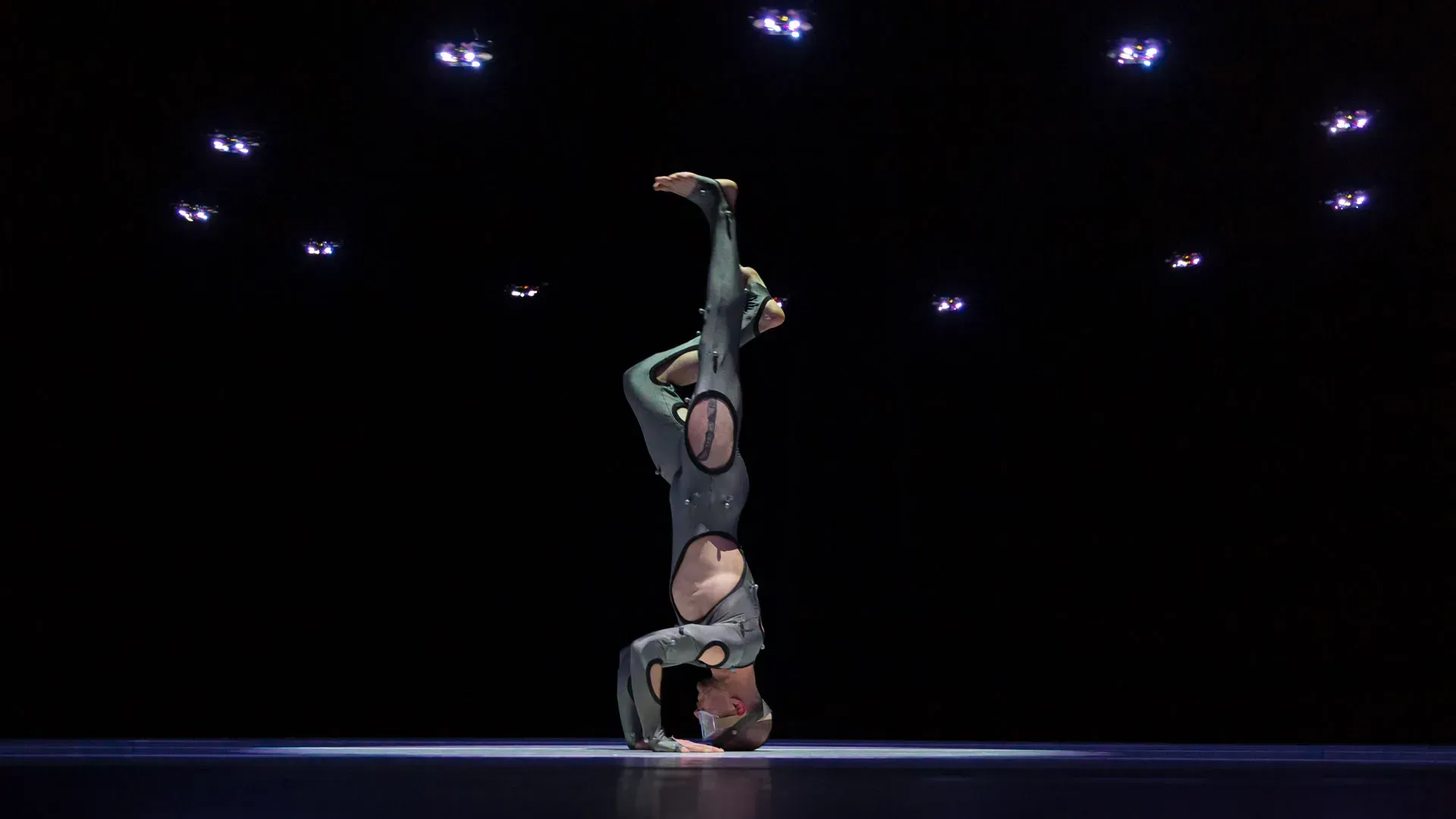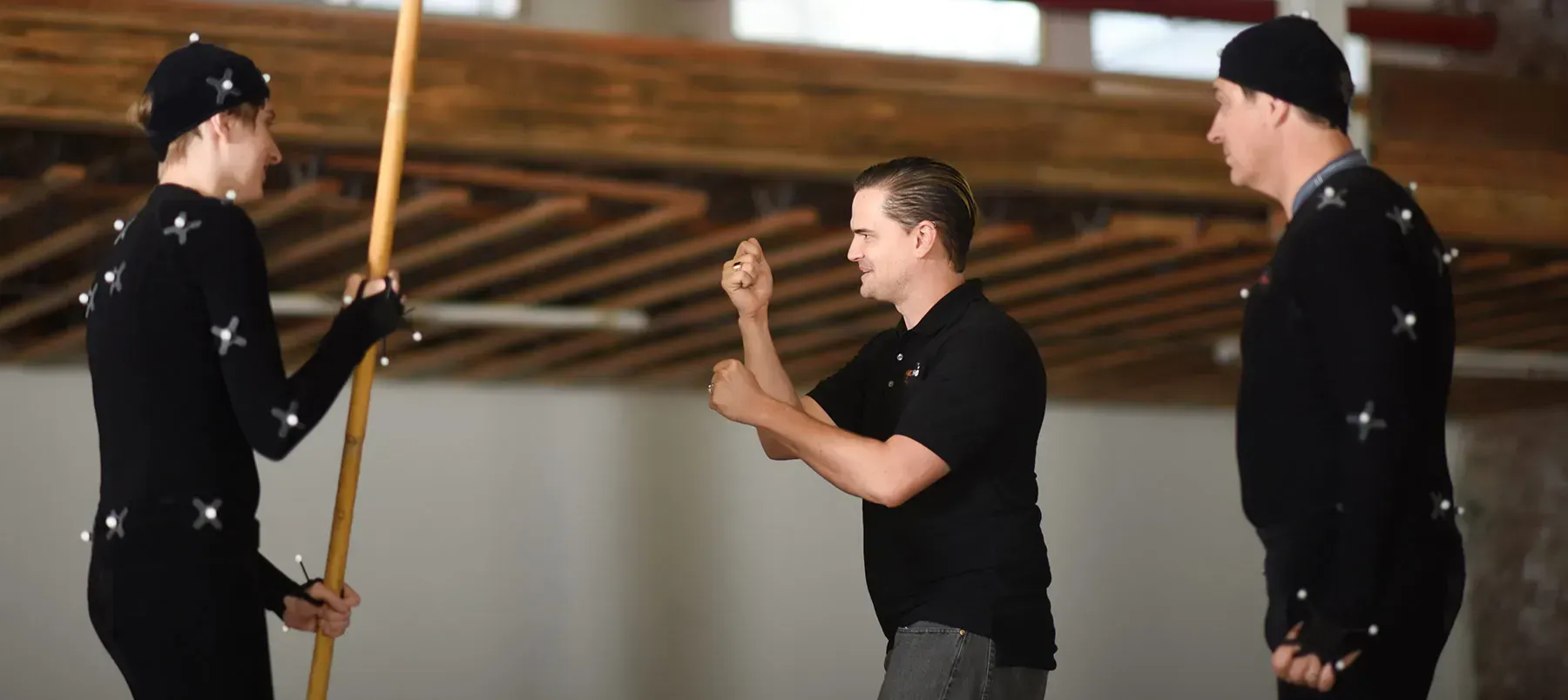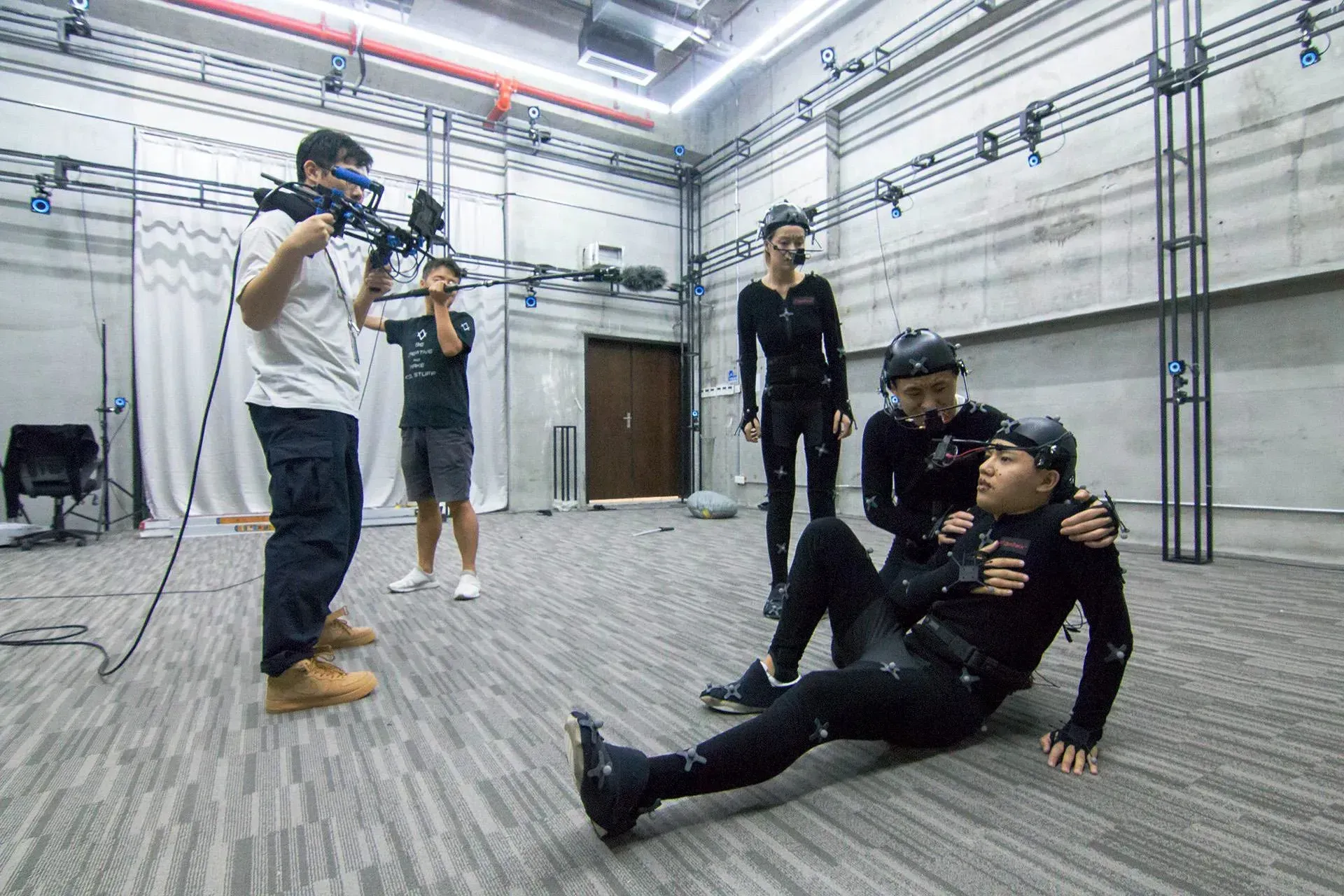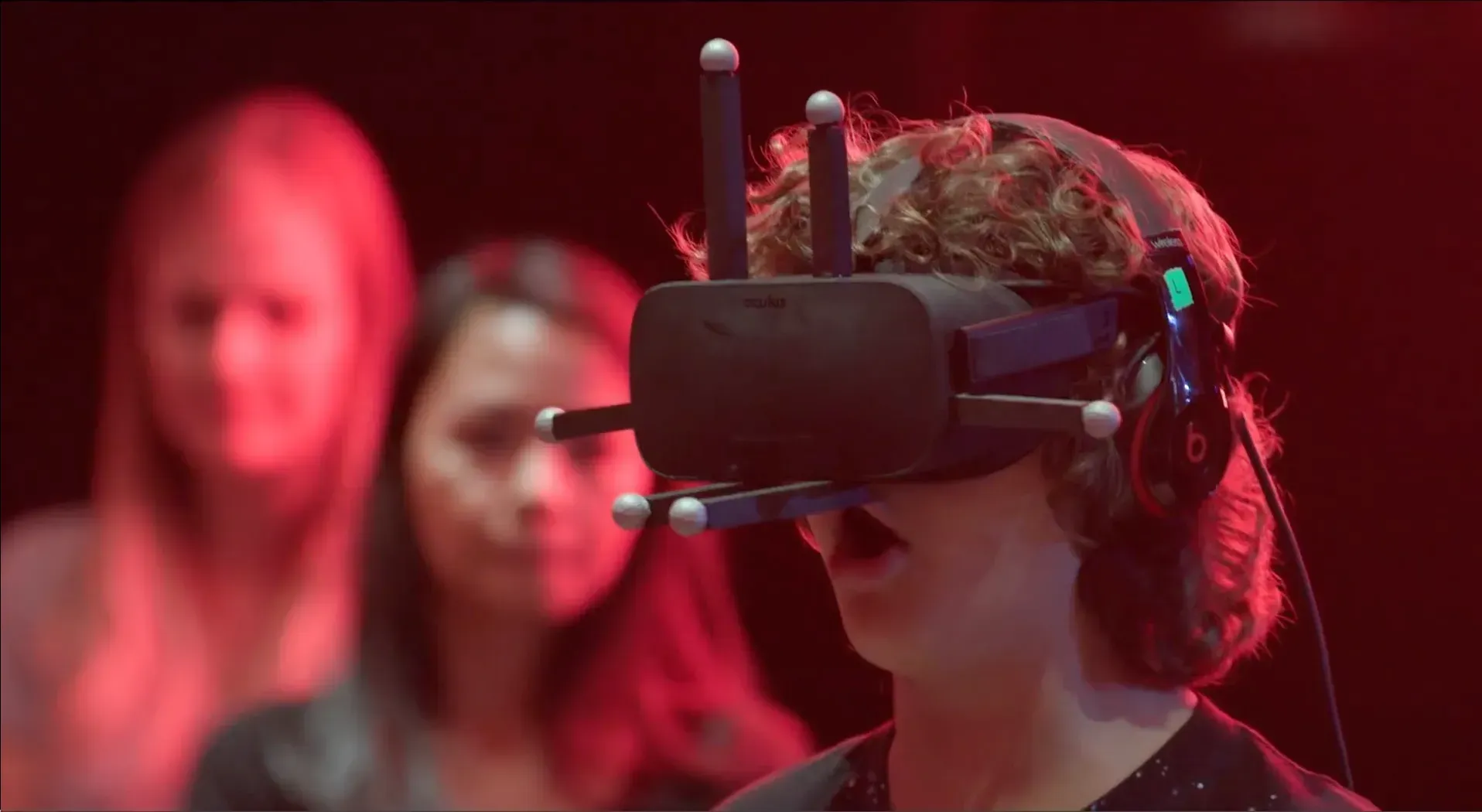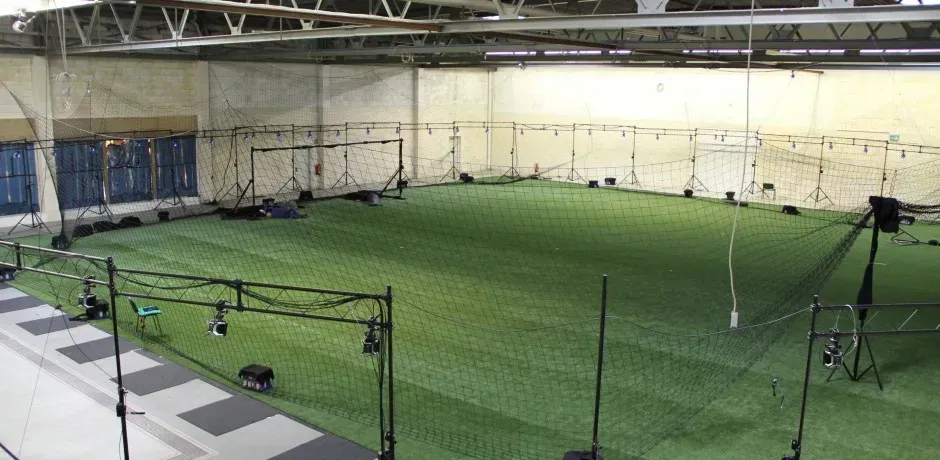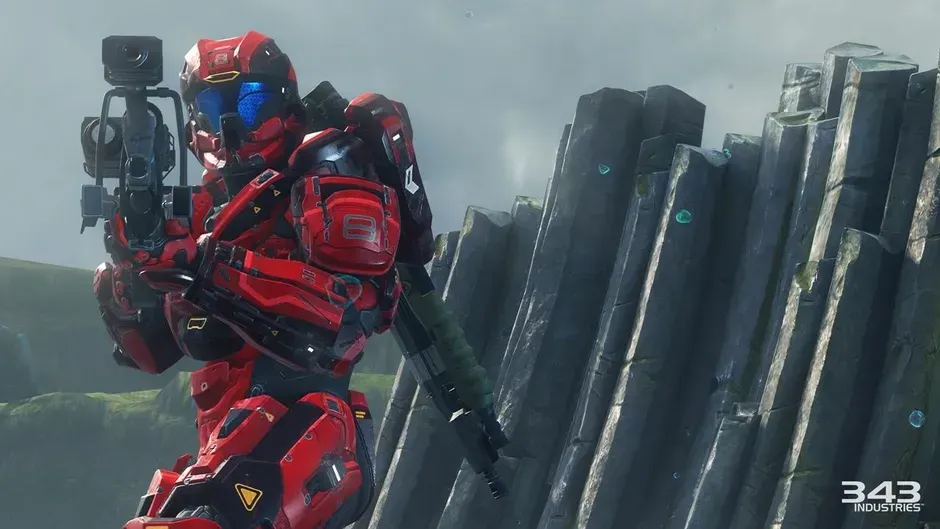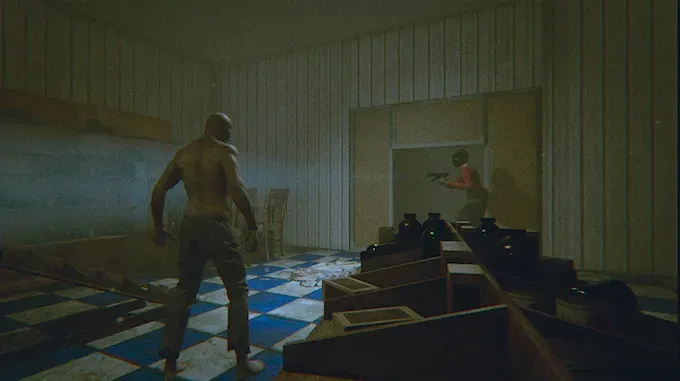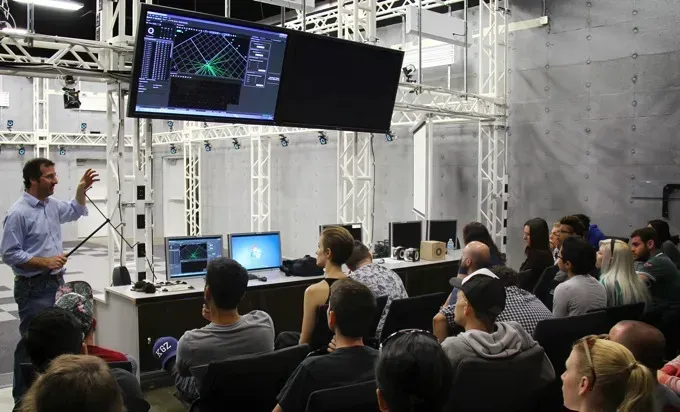
New Realms of Artistic Exploration
Lisa Jamhoury had just graduated from high school when she was a passenger in a near-fatal car accident. A portion of the seatbelt went through her skull, requiring part of her head to be reconstructed with titanium. It was the summertime and while her friends prepared for college, she spent months confined to a bed, unable to do much. The experience was profoundly physically and emotionally traumatic, leaving lasting injuries to her back and hips. It also marked the beginning of her journey as an artist and creative technologist.
"While lying in bed recovering, I didn't have control over my physical body," Jamhoury said. "And that sparked me to think deeply about my own physicality."
As soon as she regained some mobility in her neck and back, she began practicing yoga, embracing movement as a means of healing. Over time, she would progress to become an 800-hour certified Jivamukti Yoga instructor. Yoga was also her entryway into the circus arts where she trained in aerial acrobatics on silks and rope, eventually leading to an amateur performing career. For over a decade, she traveled and performed nationally and internationally while based in New York.
As she began performing, Jamhoury had completed college and was working in digital communications. Her job required long hours at a desk, exacerbating the issues in her back and hips and prompting her to reevaluate how she interacted with technology
This became a driving theme, ultimately leading her to graduate school at New York University's Interactive Telecommunications Program.
"My graduate research focused on understanding the relationship between the physical body and technology," she said. "I started to envision ways this relationship could be healthier. If technology is going to be in our lives, how can we use it to enhance our creativity and our humanity?"
Embracing this concept and drawing on her acrobatic roots, Jamhoury began experimenting with interactive performances that combined technology with contemporary circus acts. Her graduate work also involved generative machine learning, and after completing her degree, she joined Adobe's newly formed Machine Intelligence Design group, where she researched and prototyped new tools at the intersection of machine learning and creative practice.
But wanting to return to the creative arts, Jamhoury left Adobe and became fully engaged in developing interactive projects as a new media artist. Soon, she developed an interest in digital capture and 3D modeling and scanning, and began to explore the history of sculpture and the concept of capturing movement through sculpture.
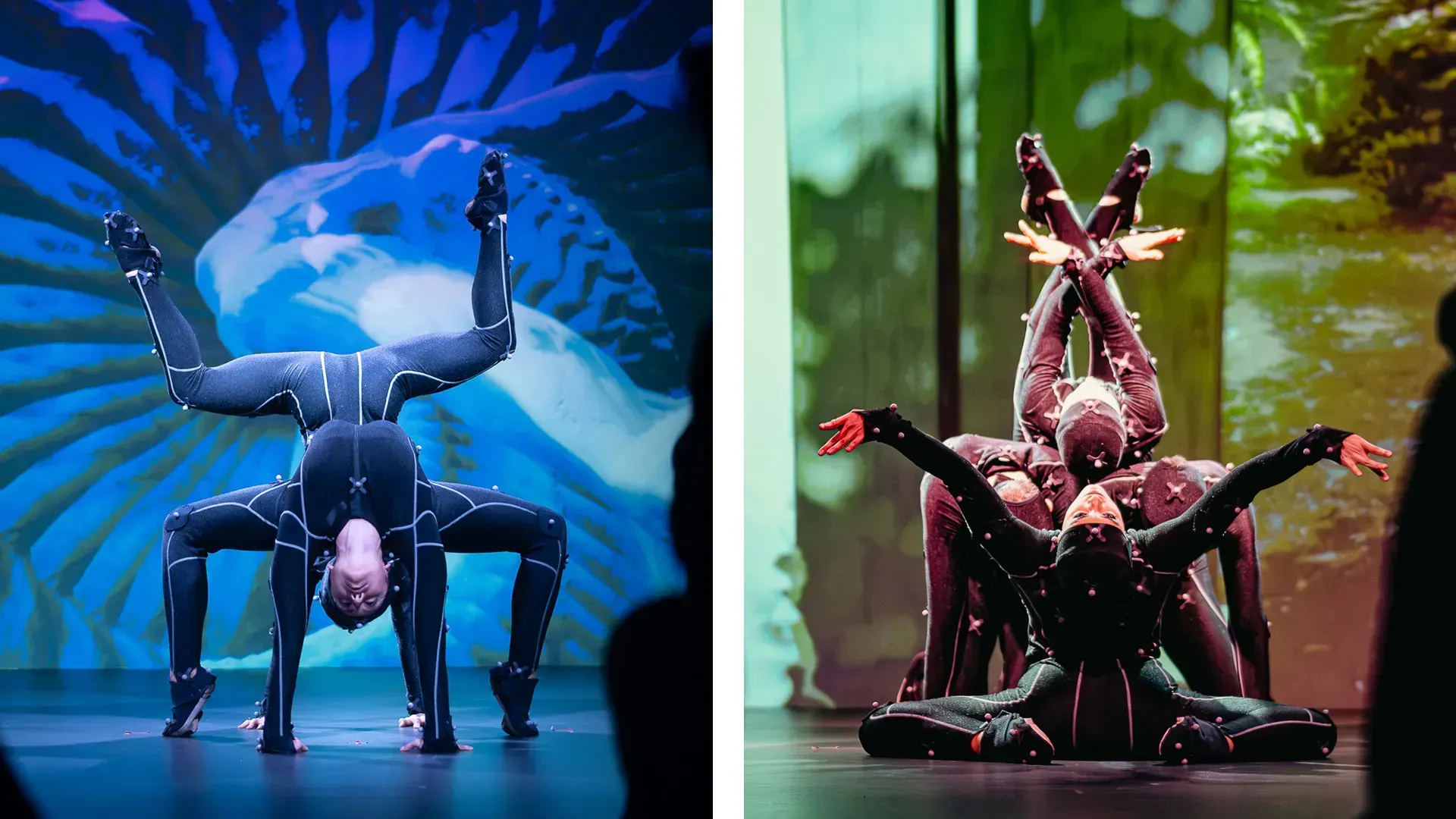
The story of Norma, a popular sculpture based on averaged women's measurements that was featured in the June 1945 issue of Time Magazine, combined with the concept of averaging and the legacy of sculpture, inspired Jamhoury's next project. By then, she had joined NEW INC, the art, design and technology incubator at the New Museum of Contemporary Art. Her piece, named Maquette, is a thought-provoking interactive performance that merges dance, dynamic avatars and an OptiTrack motion capture (mocap) system featuring 16 Prime 13 cameras.
Escaping Norms
Developed for and exhibited at the MAXlive Festival at Onassis ONX with additional support from NEW INC and EY Metaverse Lab, Maquette takes place over six scenes and unfolds simultaneously in both physical and virtual spaces. The performance is centered on a live dance choreography. Beginning in a serene sculptural garden, dancers guide the audience through a series of increasingly abstract virtual scenes. Wearing OptiTrack mocap suits, the dancers are tracked on stage in real time by the OptiTrack cameras. Paired with OptiTrack's Motive software, motion data is streamed to Unreal Engine, which animates a series of statues and objects within the projected landscape. "It's really generating a virtual world, and the performers are affecting it in real time as they move," Jamhoury said.
In true artistic representation, Jamhoury employs averaging techniques to the performance. "The audience never sees a one-to-one movement ratio," she explained. "What I'm doing is averaging the dancers' movements across a series of avatars. The sculpture itself is created from photogrammetry scans of the dancers which have also been averaged." As the piece progresses, the sculpture transforms into an enchanting form inspired by the expressive choreography. Unbound, it is able to break free from its normative mold—becoming something entirely different.
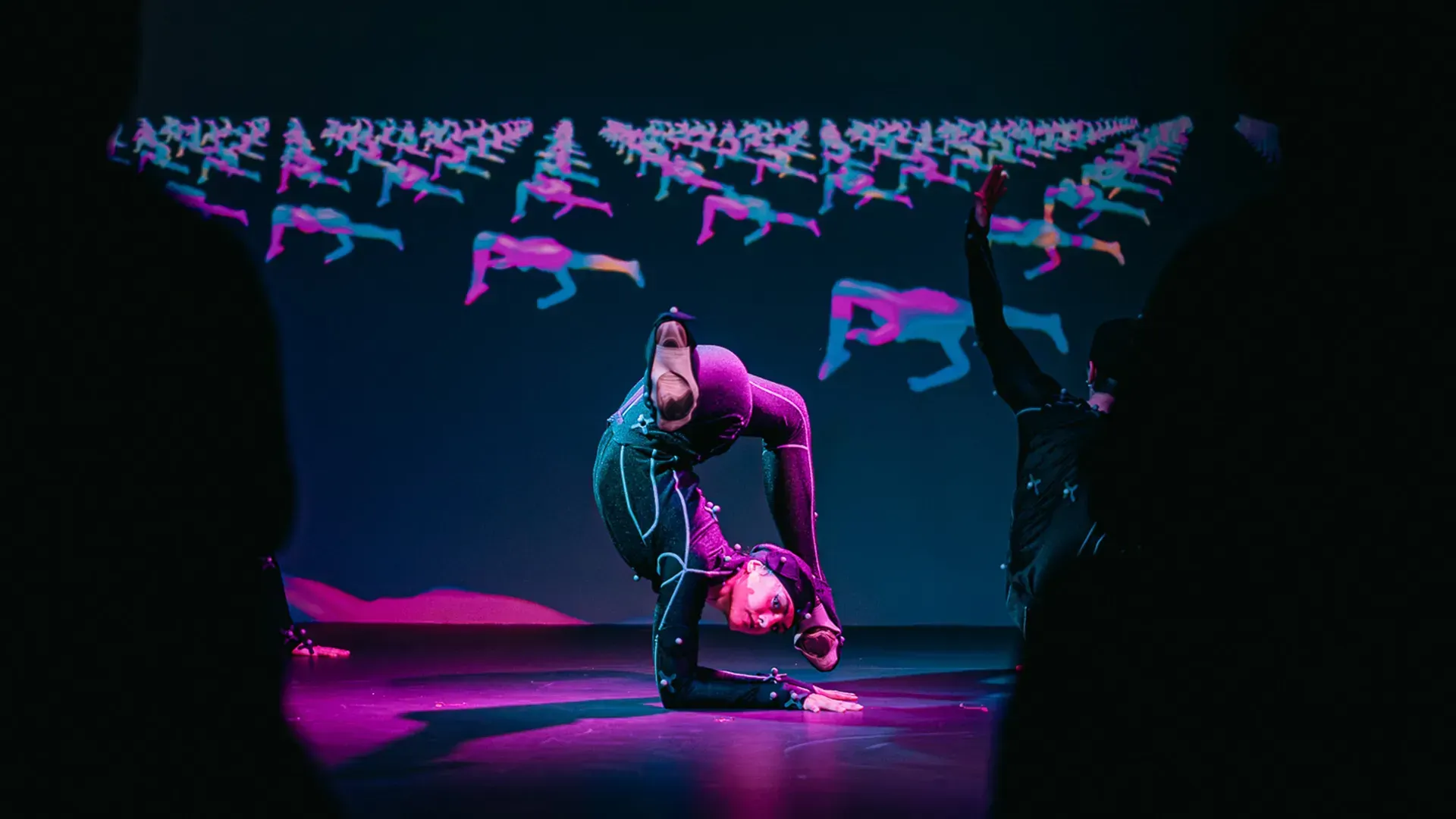
Jamhoury, who began experimenting with OptiTrack systems while in graduate school, said Maquette was originally not meant to be a live performance. "It came from this idea of sculpture, and the initial concept was to create a series of 3D printed and augmented reality sculptures," she said. "When I learned that Onassis ONX had an OptiTrack system on a performable stage, I got very excited. I knew it had to be a performance."
Working with OptiTrack and collaborating with Françoise Voranger and Andrea Nikki Ortiz of Hybrid Movement Company, Jamhoury began developing a simple prototype. "We didn't know where it was going to lead—we just started playing with the OptiTrack system and experimenting with the choreography," she said. "The performance emerged from a knowledge of the OptiTrack tool, a deep interest in the medium's possibilities and what could be created from it."
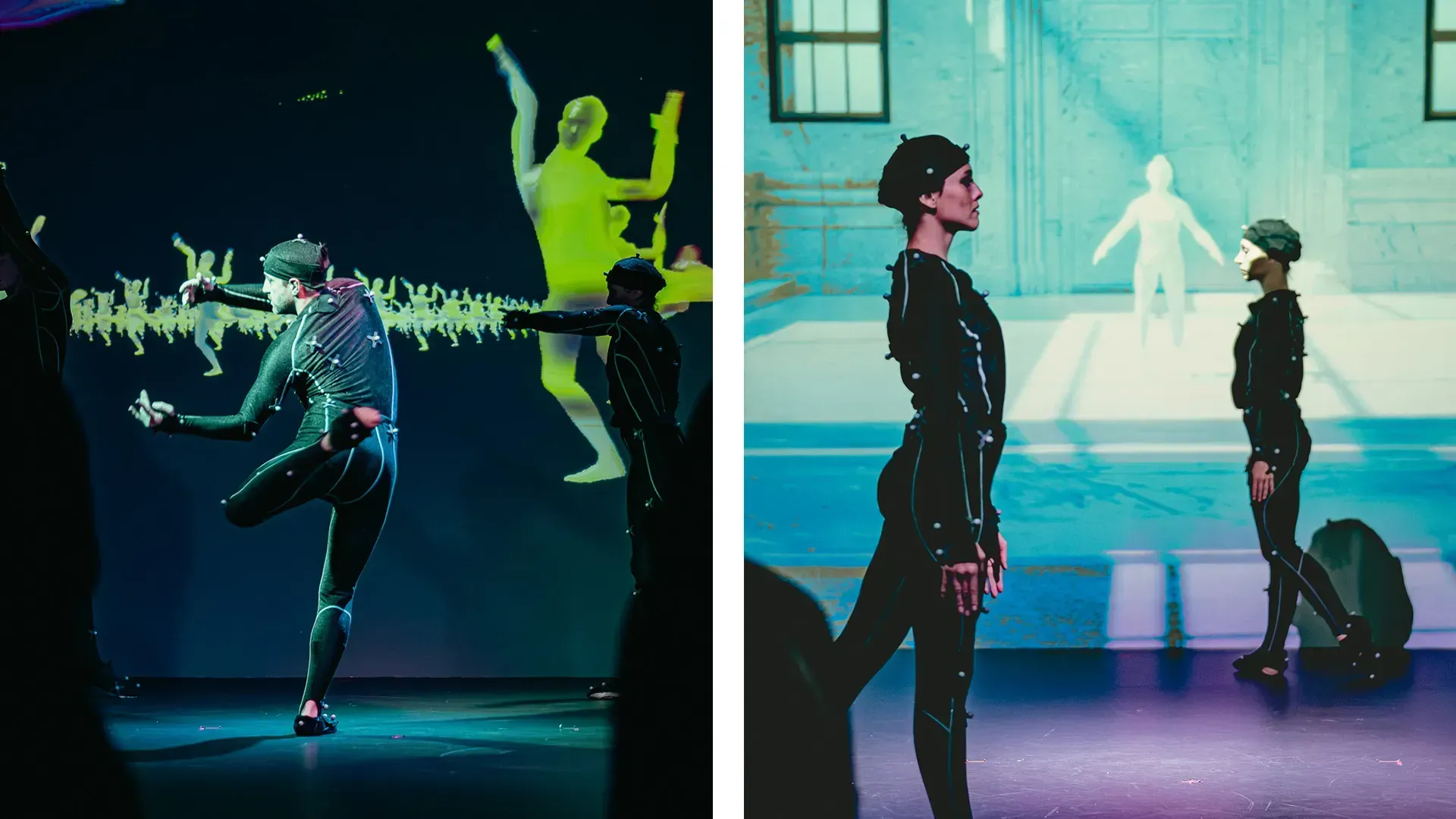
About OptiTrack
OptiTrack is the worldwide leader in 3D tracking systems through its 3D precision, low latency output, easy to use workflows, as well as a host of developer tools. Serving markets in drone and ground robot tracking, movement sciences, virtual production, media, broadcast and character animation for film and games as well as virtual reality or mixed reality tracking, OptiTrack is the most widely used tracking solution and is the favorite of demanding world-leading academia research and professional teams.
Maquette created by Lisa Jamhoury, performed by Hybrid Movement Company, presented at DEMO at Onassis ONX. Photo/video by Kirill Kovalewsky.
Maquette performed by Françoise Voranger, Grasshopper Mitch, Andrea Nikki Ortiz, and Graham Reese of Hybrid Movement Company, presented at MAXlive at Onassis ONX. Photos by Luis Suarez and Alycia Kravitz. Produced by Media Art Xploration
